TAAG Web Services Business Definition
advertisement
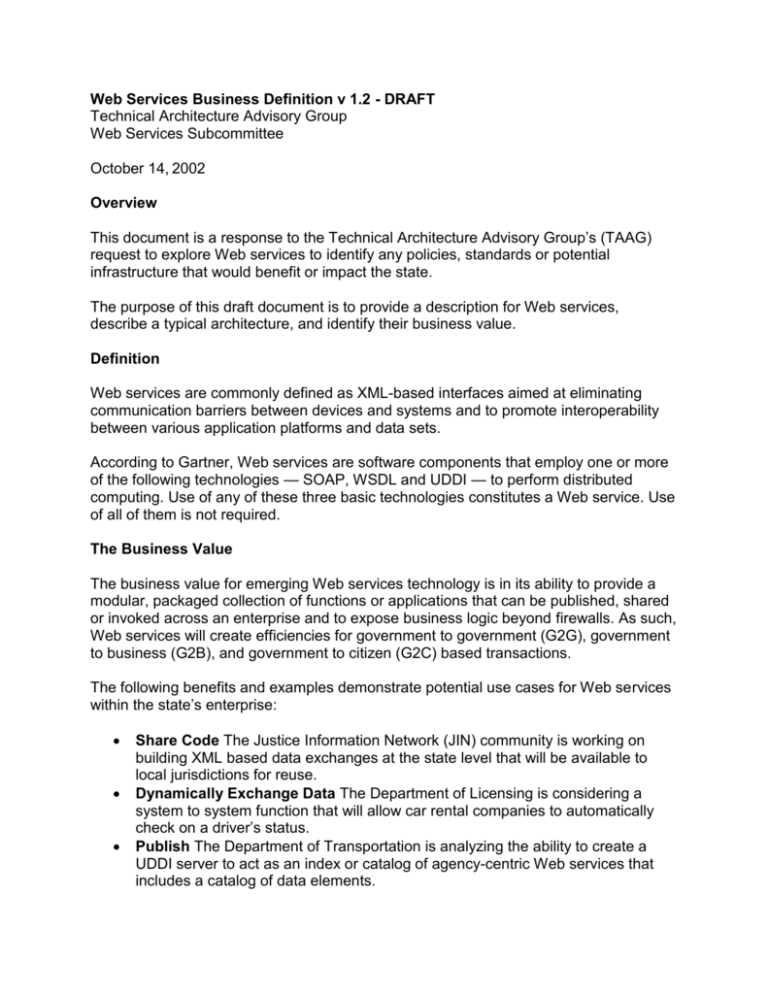
Web Services Business Definition v 1.2 - DRAFT Technical Architecture Advisory Group Web Services Subcommittee October 14, 2002 Overview This document is a response to the Technical Architecture Advisory Group’s (TAAG) request to explore Web services to identify any policies, standards or potential infrastructure that would benefit or impact the state. The purpose of this draft document is to provide a description for Web services, describe a typical architecture, and identify their business value. Definition Web services are commonly defined as XML-based interfaces aimed at eliminating communication barriers between devices and systems and to promote interoperability between various application platforms and data sets. According to Gartner, Web services are software components that employ one or more of the following technologies — SOAP, WSDL and UDDI — to perform distributed computing. Use of any of these three basic technologies constitutes a Web service. Use of all of them is not required. The Business Value The business value for emerging Web services technology is in its ability to provide a modular, packaged collection of functions or applications that can be published, shared or invoked across an enterprise and to expose business logic beyond firewalls. As such, Web services will create efficiencies for government to government (G2G), government to business (G2B), and government to citizen (G2C) based transactions. The following benefits and examples demonstrate potential use cases for Web services within the state’s enterprise: Share Code The Justice Information Network (JIN) community is working on building XML based data exchanges at the state level that will be available to local jurisdictions for reuse. Dynamically Exchange Data The Department of Licensing is considering a system to system function that will allow car rental companies to automatically check on a driver’s status. Publish The Department of Transportation is analyzing the ability to create a UDDI server to act as an index or catalog of agency-centric Web services that includes a catalog of data elements. A Definition of Web Services DRAFT Components and Emerging Standards Web services are based on four open, nonproprietary standards-based components that communicate over Internet-standard technologies, mainly XML over HTTP. They include emerging software components such as UDDI, WSDL, and SOAP. Acronym Name XML Extensible Markup Language UDDI Universal Description, Discovery, and Integration WSDL Web Service Description Language SOAP Simple Object Access Protocol Description A universal format for structured Web-based data and documents. Enables interoperability and data sharing. Web-based registries that expose information and technical interfaces (APIs). Allows others to discover what is available. The XML-based language used to describe the services exposed via the UDDI registries. SOAP defines the XML information within the function or application. Enables communications between applications running on dissimilar operating systems. Although Web services are more commonly known as the suite of components they can also categorized as platforms. The Four Platforms According to the Gartner Group, there are four platform categories within Web services: Provider, Consumer, Production, and Management. They are intended to provide a framework to support the specific needs of Web services. The categories are neither hierarchical nor mutually exclusive and may overlap with dependencies on related functions. 1. Provider – hosts a Web service; the place where it runs Examples include: application server integration server mainframe computer hosting a wrapped service 2 A Definition of Web Services DRAFT 2. Consumer – the software that connects a service to an end-user or directly to an application client. An end-user example might be where information is delivered or input is retrieved to/from an end-user. An example might be text-based information or highway map to an end-user via a PDA or cell phone. This service doesn’t depend on a complete Web services architecture. May include a portal product, portal server, Web browser, or PDA. An application client can be used to automate a service such as a portal to client or system to system program without the need for a user interface. 3. Production – automates production of Web services, reduces need for developer to write code Includes an engine that maps the XML, UML, rules, scripting languages, etc to the underlying components such as .NET or Enterprise JavaBean components. Accelerates the abilities of lesser-skilled developers. Enables more-skilled developers to modify the underlying code. 4. Management – set of software services that help coordinate the activities of services Two industry leaders are Sun Microsystems’s Java 2 Enterprise Edition (J2EE) and Microsoft’s .NET. In order for a service to manage the activities of another it must share the same provider platform. For example a J2EE-based Web service can’t manage a .NET-based service. Source: Gartner Group Security Risks Web services are designed to allow data to be shared by remote systems. As such, security is important to protect back-end systems, applications, data, and to insure privacy and confidentiality of information. When exposing part of a business application 3 A Definition of Web Services DRAFT as a Web Service, it is necessary to ensure that the business data is not compromised. A comprehensive Web Service security architecture must provide end-to-end security. Wide-scale deployment of Web services has been slow due to security concerns. Because Web services use standard HTTP communications via port 80, some believe it may be difficult to protect against unwanted attacks or intrusions.1 According to Microsoft, SOAP messages can be sent over a Secure Socket Layer (SSL) when the need is greater to protect sensitive data. If the overhead is too great, individual elements within the SOAP body can be encrypted using the latest emerging technologies such as SAML. A number of industry leaders are working on new security specifications. The Organization for the Advancement of Structured Information Standards (OASIS) is a consortium that produces standards for Web services, security, and XML based exchanges. OASIS is working on the Security Assertion and Markup Language (SAML) that is intended to address security and privacy concerns for Web services. Observations Web services are in the early phases of the technology adoption cycle. According to Gartner, most deployments of Web services have been for internal use. Communication between agencies, entities, and communities of interest will play an important role in establishing web services. .NET and J2EE are both major platforms for Web services development. Depending on business needs, existing infrastructure, and programming resource skills, both platforms may co-exist within an enterprise architecture. Security issues, risks, and emerging industry standards should be closely monitored. Further research is needed to identify high-value opportunities and strategies for the implementation of Web services enterprise-wide or within communities of interest. State guidelines are needed as Web services technology matures. 1 Rash, Wayne, (2002). Web services are insecure. ZDNet. [Online]. Available: http://techupdate.zdnet.com/techupdate/stories/main/0,14179,2854496,00.html 4 A Definition of Web Services DRAFT Glossary XML The Extensible Markup Language (XML) is designed to share both format and data via the Web. XML 1.0 is a formal recommendation by the W3C. Information on the XML family of technologies is available at: http://www.w3.org/XML HTTP The Hypertext Transfer Protocol (HTTP) is an application protocol that is the set of rules for exchanging files (text, graphic images, sound, video, and other multimedia files) on the Web. UDDI Universal Description, Discovery, and Integration (UDDI) is an XML-based registry for business worldwide to list themselves on the Internet. UDDI is often compared to a telephone book that allows businesses to list themselves by name, product, location, or the Web Services they offer. Another potential usage could be to host an internal UDDI server to act as an index or catalog of agency-centric Web services that includes a catalog for data elements, and Web-based program elements. Information about UDDI is available at: http://www.uddi.org WSDL Web Service Description Language (WSDL) is an XML format for describing network services as a set of endpoints operating on messages containing either documentoriented or procedure-oriented information. WSDL complements UDDI by providing and XML vocabulary for Web services. WSDL 1.1 was submitted to the World Wide Web Consortium (W3C) by Microsoft and IBM and is not yet a W3C Recommendation. In addition, the W3C has published a Web Service Description Usage Scenarios working draft available at: http://www.w3.org/TR/2002/WD-ws-desc-usecases-20020604/ SOAP Simple Object Access Protocol (SOAP) is a lightweight protocol for exchange of information in a decentralized, distributed environment. It is an XML-based protocol that consists of three parts: an envelope that defines a framework for describing what is in a message and how to process it, a set of encoding rules for expressing instances of application–defined data types, and a convention for representing remote procedure calls and responses. SOAP 1.2 was submitted to the W3C by vendors such as Microsoft, IBM, and Lotus. It is not yet a W3C Recommendation. The SOAP 1.2 working draft is available at: http://www.w3.org/TR/2001/WD-soap12-part1-20011217/ 5 A Definition of Web Services DRAFT Emerging Security Specifications XKMS The XML Key Management Specification (XKMS) is an emerging protocol for distributing and registering public keys. XKMS comprises two parts -- the XML Key Information Service Specification (X-KISS) and the XML Key Registration Service Specification (X-KRSS). XKMS is not yet a W3C recommendation. The working note is a available at: http://www.w3.org/TR/xkms/#_Toc505753123 SAML The Security Assertion Markup Language (SAML) is an emerging XML-based security standard for exchanging authentication and authorization information. SAML specifications are set by the Organization for the Advancement of Structured Information Standards (OASIS) organization. More information is available at: http://www.oasis-open.org/committees/security/#documents XML Signature XML Signature defines the schema that enables data associated with digital signatures to be modeled in XML. XML Signature is managed by the W3C and the Internet Engineering Task Force (IETF). More information is available at: http://www.w3.org/Signature/ Additional Resources Site uddi.org webservices.org Description Specifications and information on UDDI . Information on Web services architecture, platforms, applications, security, and more. www.w3.org Web services framework, XML, SOAP, and WSDL www.xmltrustcenter.org Aggregates security related information for XML and public key infrastructure technologies, www.oasis-open.org/ Organization for the Advancement of Structured Information Standards (OASIS). Security and other ebusiness specifications for Web services. Contact Information Rick Cook Deputy Director ISSD Department of Social and Health Services (360) 902-7714 Cookre@dshs.wa.gov Paul Piper Sr. Policy Advisor Department of Information Services (360) 902-3471 paulp@dis.wa.gov 6

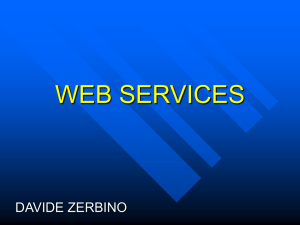

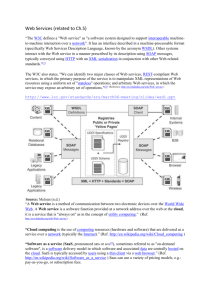
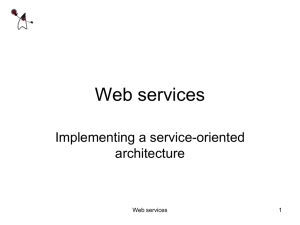
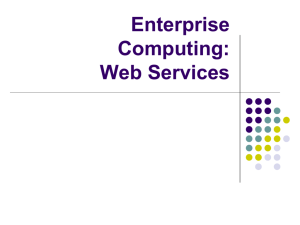
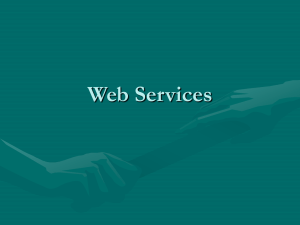
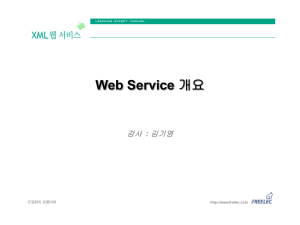
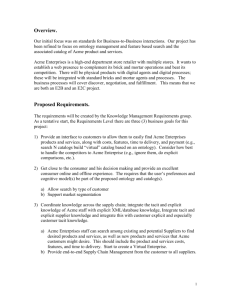
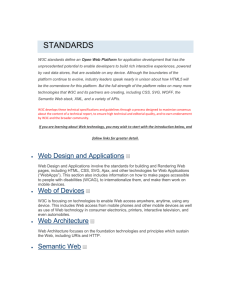
![[#CARBON-13743] Key store password of catalina](http://s3.studylib.net/store/data/007841975_2-b5be293be17dfbfd4fa5374476b625ea-300x300.png)
